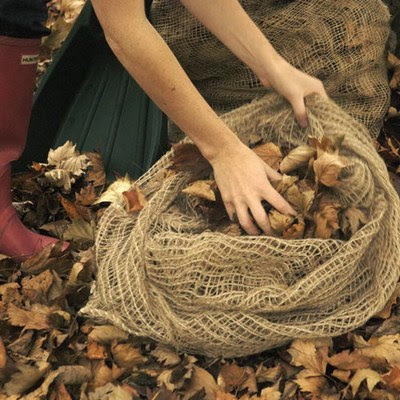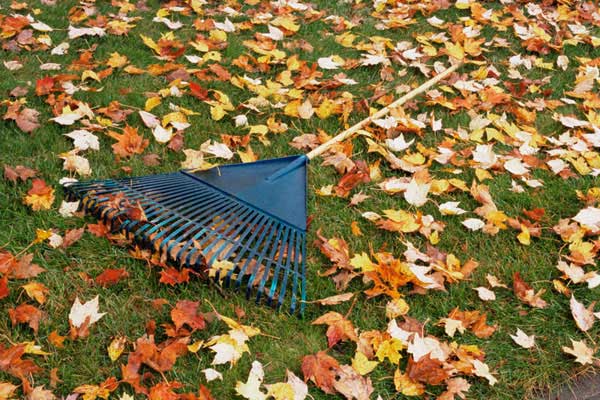Autumn Gardening Tips

Autumn is the mellow season, after all the hectic flowering, growing and other activities have now come to an end. September and October offer great opportunities for gardeners as the weather is usually mild therefore you can get out into your garden and prepare it for the harsh Winter months. This is your time to start putting your garden to rest for a few months and enjoying the natural beauties of Autumn. The changing colour of the leaves and the wonderful Autumn fruit and berries. In this guide we offer some helpful tips on Autumn gardening to ensure you are fully prepared for the coming months.
Attend To Your Vegetables and Herbs
Some vegetables can be sown during Autumn and throughout Winter to guarantee you an early crop the following year. Typical vegetables you can sow during this time are peas, spinach, spring cabbage and swiss chard. Spring onions can also be sown during Autumn for overwintering.
You may still have lots of herbs in your vegetable patch such as rosemary, basil, tarragon and oregano. To protect these herbs during Winter dig them up and transfer them into pots so they can continue to grow inside your house. Make sure you position them in a cool, dry spot allowing the soil to fully dry out before watering again. When required you can cut the leaves off however be careful not to strip them completely. Cut back herbs about halfway that have grown vigorously during the Summer and freeze this harvest so you can enjoy them when you please.
Make Leafmould
Leafmould is produced from decaying leaves and produces a fantastic soil conditioner. You can use just about any leaf to create your leafmould however some leaves will break down quicker than others for example, oak, beech or hornbeam break down quickly with very little assistance. Thicker leaves such as sycamore should be shredded before adding to your leafmould pile that way they will break down much quicker.
Autumn is the perfect time to make leafmould due to the trees dropping their leaves. Start to collect leaves creating a leafmould pile in your garden. To save time or if the weather is windy you can collect the leaves with a lawn vacuum. Don’t forget to collect leaves from your lawn as well as from footpaths, use a rotary mower that will shred the leaves therefore encouraging rotting. Once you have your leafmould pile you should place the leaves into a bin liner. If your leaves are crisp and dry moisten them and then begin to pierce some holes in the bin liner. Tie your bin liner loosely at the top and stack it away for a few years, you should then have a soil conditioner ready to use.

Introduce Mulch
Laying mulch or wood chippings between plants and shrubs is an essential activity throughout Autumn before we really start to feel the harsh, cold weather. Mulching helps to protect the soil as well as keeping in vital nutrients which are necessary for the soil to remain fertile ensuring that your plants remain healthy all year round.
You can opt for decorative mulches such as slate chippings or gravel these will ensure that your plants are protected whilst also adding colour and structure to your landscape. Alternatively you can opt for a biodegradable mulch such as wood chippings these can add additional nutrients creating a healthy soil for your plants to grow in. For help with mulching check out our beginners guide to mulching. For decorative mulching ideas be inspired by our pinboard.
Lawn Care
It’s tradition during Autumn to revitalise your lawn after dry, Summer weather. Your lawn may have received heavy traffic during Summer therefore it is essential to offer some maintenance as well as preparing it fully for the Winter. First you should tackle any moss by spreading a moss killer throughout the lawn. Moss is often found under hedges or trees, getting it under control now will benefit you in the coming months.
Areas of your lawn that receive lots of traffic such as play areas or dining areas often become compact. You can improve your drainage by using a garden fork and pushing it into the ground creating air holes. You should repeat this process every 15cm on compact areas.
Finally feed your lawn with an Autumn fertiliser. This fertiliser will contain high levels of phosphate contributing to strong roots developing which will produce a healthy, lush lawn. Remember Autumn is also an ideal time to lay new turf giving it plenty of time to establish before next season. Read our turf laying guide here.

Tidy Borders
Your Summer display will have now stopped flowering therefore you should begin to start cleaning out your borders. Start by digging up your Summer plants, if you have a compost heap these plants can be added. You should then replace your Summer bedding with Winter plants such as Pansies, Primroses and Wallflowers. Remember you can be as creative as you like by selecting a wide range of colourful plants. Whilst the weather is still mild and your soil is warm you should reposition your plants if you have suffered from overcrowding during the Summer. Once you have tidied your beds and borders you can spread a layer of compost or mulch to protect them during Winter.
We hope this guide has provided you with some helpful advice on the gardening activities to focus on during Autumn. Check out our Autumn gardening pinboard for some wonderful creative gardening ideas.




